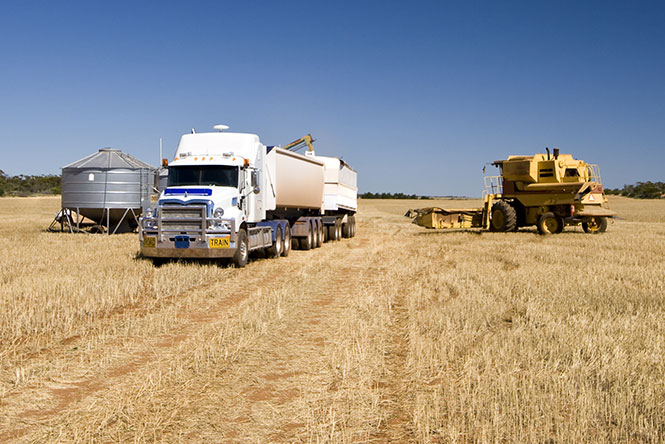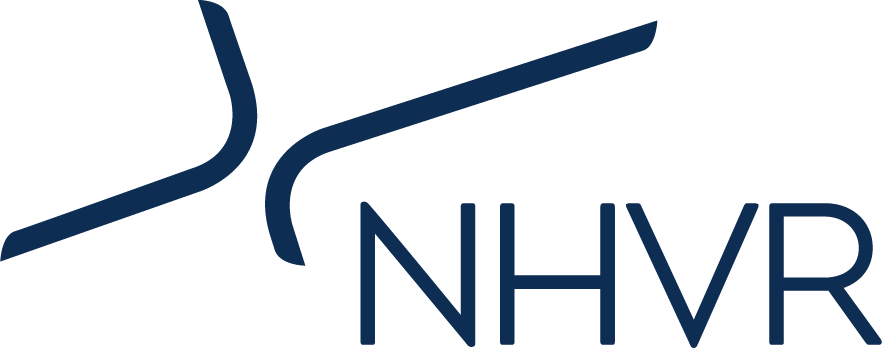Chain of Responsibility - primary producers
Chain of Responsibility - primary producers
National
Heavy
Vehicle
Regulator

Primary producers play an important role in supporting safe, reliable road transport for the benefit of all road users. They may also have legal obligations under the Heavy Vehicle National Law. Under this law, if a primary producer is a party in the Chain of Responsibility, they have a duty (the primary duty) to ensure the safety of their activities to do with heavy vehicles.
This law applies in the same way to all other industries and sectors that use heavy vehicles to transport goods or materials. It is called the “primary” duty because it is the most important one.
Am I part of the heavy vehicle chain of responsibility?
Any time a primary producer sends or receive goods using a heavy vehicle with a gross vehicle mass of more than 4.5 tonnes — regardless of whether the vehicle belongs to them or to someone else — they are part of the chain of responsibility.
What is a primary duty?
The primary duty aligns closely with the general safety duty in workplace health and safety laws. It is a duty to ensure the safety of heavy vehicle activities over which a person or business has influence or control. This includes risk management of your own activities as well as ensuring that you do not cause or encourage other parties to breach the law or encourage drivers to speed or drive while fatigued.
What do I need to do to meet this duty?
You are required to do everything that is reasonably practicable to manage safety. This means that you consider the types of risk you create and assess how likely they are to occur, and how serious the consequences would be.
You then find out about ways to eliminate or reduce those risks and if there are controls available whose expense isn’t out of proportion to the risk, then you should make sure those controls are implemented. Controls means anything which reduces risk. It might be equipment, maintenance, training, or policies. It might be an agreement with other people about how certain processes are carried out.
If you are doing everything that is reasonably able to be done to identify, assess, reduce or wherever possible, remove safety risks related to your transport activities, you are likely to be complying with the law. If you already have effective ways to make sure you’re doing everything you can to manage the safety risks associated with your operations, then you should continue to apply those same processes.
As a primary producer, what are my obligations under heavy vehicle Chain of Responsibility laws?
What you should focus on depends on whether you own and operate a heavy vehicle or whether you contract an operator to undertake the heavy vehicle transport task.
Are you a primary producer who owns and/or operates your own heavy vehicle?
The most relevant areas of responsibility for you as a primary producer will include:
- what and how much is loaded onto the vehicle, how the weight is distributed and how the load is restrained
- that the vehicle is fit for purpose, mechanically safe and legally able to be used on a road
- that the driver, who may be you, is not tired and doesn’t work longer than allowed by law
- that you understand the safety risks your activities pose to the transport task, including packing goods for transport, scheduling travel and delivery times, and the impacts of delays in loading and unloading trucks
- that you avoid requests, instructions, requirements or demands that may influence the driver to speed or drive while fatigued — whether written in a contract or made verbally.
Chain of Responsibility - primary producers
Are you a primary producer who contracts transport services to a heavy vehicle operator?
Consult your provider to ensure any safety risks are understood and steps are taken to mitigate those risks. Some relevant areas of responsibility for you as a primary producer may include:
- avoiding requests, instructions, requirements or demands that may influence the driver to speed or drive while fatigued — whether written in a contract or made verbally
- ensuring stock or loads are ready to load on time so that a driver is not unduly delayed and pressured to speed or exceed fatigue hours
- taking account of effluent production when preparing livestock for transportation
- ensuring safe access, while on your property, for heavy vehicles and drivers, and advising them or relevant local knowledge
- ensuring you consult with your transporter and other parties in the chain when setting timeframes for pickup and delivery
- using operators that provide safe and compliant transport activities.
Here are some of the more common questions asked by primary producers about heavy vehicle Chain of Responsibility laws.
What can I do to make sure the transporter’s activities are safe and compliant?
Your main duty is to make sure that your conduct does not contribute to unsafe practices by a transporter. Therefore, avoid working with companies that are known to have a poor safety and compliance reputation and seek out companies that have a good reputation.
You should negotiate an agreement with a transporter, whether it’s in a written contract or a verbal agreement, which makes clear that they must comply with regulations and safety requirements and that if they breach those requirements there will be consequences.
For example, if a vehicle is sent to collect your goods or stock that is unsafe, or too small for the load, you may send it away without being loaded and insist that an appropriate vehicle be sent instead. Your contract or agreement with the transporter should cover what would happen in those circumstances, particularly if delay would cause financial loss to you. If a transporter refuses to accept those conditions, or fails to meet them, you should consider looking for a different transporter.
Other examples include:
- You should provide information about the expected weight of goods or stock so that the transporter knows which vehicle is appropriate, and which permits if any would be required.
- You should help the transporter with scheduling by providing realistic estimates of the time required for loading, any confirmed delivery times and travel times on local roads.
- You should make sure that there is safe access to your property and equipment (or people) necessary for loading.
In particular, you should avoid offering any incentives for drivers to exceed speed or mass limits, or to drive while fatigued.
Do I need to be there when the vehicle picks up my goods?
No, so long as you can be sure the goods will be ready and accessible on time, and that the driver will have all the information, equipment and assistance that is required.
Do I need to know how much my goods weigh?
You should be able to advise the transporter of the weight of the goods with a degree of accuracy either by weighing them or assessing their weight in another way.
Take into account factors that impact the weight of the product being transported (such as humidity, or the type of feed that stock have had).
Chain of Responsibility - primary producers
Do I need to inspect the vehicle to make sure it is roadworthy, or well maintained?
You should only be working with transporters who take responsibility for thorough maintenance of their vehicles.
You are not required to physically inspect a vehicle when it comes onto your property. However, based on what you do know, if you see something about the vehicle that would make it unsafe when it leaves your property, you should refuse to load the vehicle, or use other practicable ways to avoid using the vehicle until it is repaired.
Do I need to check to see if the driver is fatigued?
You should only be working with transporters who effectively manage their drivers’ fatigue and fitness for duty.
You do not have to assess a driver for fatigue, however if you do notice a driver is tired, or complains about needing rest, you should refuse to load the vehicle, or use any other practical ways available to you to allow the driver to rest before taking goods from your property.
Do I need to check driver licences, registration and insurance?
Responsibility for licensing, registration and insurance should rest with the transporter. This should be clear in your contract or agreement with them.
Do I have to make sure the load is restrained properly?
If you (or your employee/s) load and restrain the goods yourself, you need to make sure the goods are loaded as specified in the Mass, Dimension and Loading Regulations and the Load Restraint Guide.
If a transporter is responsible for loading your goods, your agreement with them should include a requirement that they follow regulation loading practices.
Do I need to make sure the transporter has a permit to move oversized loads?
When you make arrangements for your goods to be transported, you should request that the transporter obtains all necessary permits and schedules the journey to meet legal requirements.
What happens to me if the driver speeds?
In most circumstances you don’t have any control or influence over what happens when your goods leave your property, and you will not be liable if your conduct did not encourage or cause the speeding. However, avoid asking your transporter to deliver your goods within a timeframe that requires the driver to speed to get there on time.
You should ask your transporter to arrive with enough time to load the vehicle, and drive to its destination legally and safely, factoring in unplanned delays. To assist, make sure your goods are ready to be picked up, and if for any reason you will be delayed, let your transporter know as soon as you can.
What are the penalties?
The laws include penalties for breaches of the safety duty which are similar to fines under workplace health and safety laws. These fines can only be imposed by a court—not by the issue of an infringement notice.
Courts take into account numerous factors when deciding penalties, including previous offences and positive steps that were taken to ensure safety. Maximum fines are a guide to courts and are only ever imposed for the worst possible examples of an offence.
What tools and information are available?
The NHVR encourages all parties in the heavy vehicle supply chain to adopt and utilise a Safety Management System as part of their everyday business, to help effectively consider and manage their operations’ day to day safety risks.
The NHVR is also continually developing guidance and tools to guide and help primary producers meet the safety needs within their business. For more information on Chain of Responsibility visit www.nhvr.gov.au/cor

 Accessibility tools
Accessibility tools

